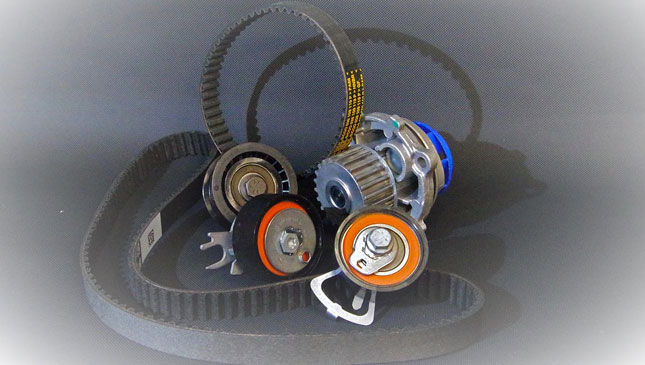
Our reader Jovellanos A. sent in an auto maintenance inquiry about timing belt replacement. Issues like this apply to cars that are a bit older. And we love that! Many of us here in Top Gear Philippines love the charm of older cars. As such, we are very concerned about maintenance issues. Here’s his question:
When is the right time to replace the timing belt of my 2003 Mitsubishi Adventure? The mileage registered is already 97,389km. My usual route is just within the vicinity of Antipolo City, namely Cainta, Marikina, Pasig, Mandaluyong, and Quezon City. But those are infrequent trips. The car is seldom used and my passengers are one or two at the most. My maximum seating capacity is never utilized. So, the engine is not forced to its maximum capability. It's always lightly loaded and only for private use. Still no traces of oil spilling out of the engine area. Please provide me your views and comments on this issue.
Jovellanos A.
What is a timing belt? A timing belt or a timing chain is that part of a vehicle’s internal combustion engine that drives the cams and operates the valves that feed fuel into the combustion chambers and extracts spent gases from them. The name 'timing belt' refers to its function of timing the precise opening and closing of the valves with the up and down movement of the pistons.
If your vehicle has a timing belt, it will require changing after a while because of wear. More often than not, the replacement interval is somewhere around 60,000km to 100,000km, depending on what the particular manufacturer of your engine prescribes. So, please check with the owner’s manual of your Mitsubishi Adventure.
In the case of your AUV, Jovellanos A., at 97,389km your engine is most likely at the latter end of the recommended replacement period--which means that you should replace the timing belt soon. I know you said that your car is lightly used and there are no signs of oil leaks. But these things don’t really matter. The advice we’re giving here is based on preventive maintenance. We don’t want to push our luck by ignoring the service interval and waiting for something to go wrong before we fix it.
If you defer this maintenance item, you’re probably courting an unexpected breakdown while on the road. Such an event may cost you more in terms of added towing expenses. And in some cases, a worn belt that snaps may cause the pistons to crash into the valves. If this happens, you’re going to have to open up the engine to replace the valves. And that’s going to be far more expensive than just replacing the belt. Preventive maintenance can, and will, save you money.
While you’re changing the belt, you may as well replace your camshaft and crankshaft seals. It may also be a good time to check your water pump if it needs replacing. The camshaft, crankshaft seals, and water pump are easier to get to when the timing belt is off. So you might want to take this opportunity to replace them while you’re already in there.
Hope this helps you out!











